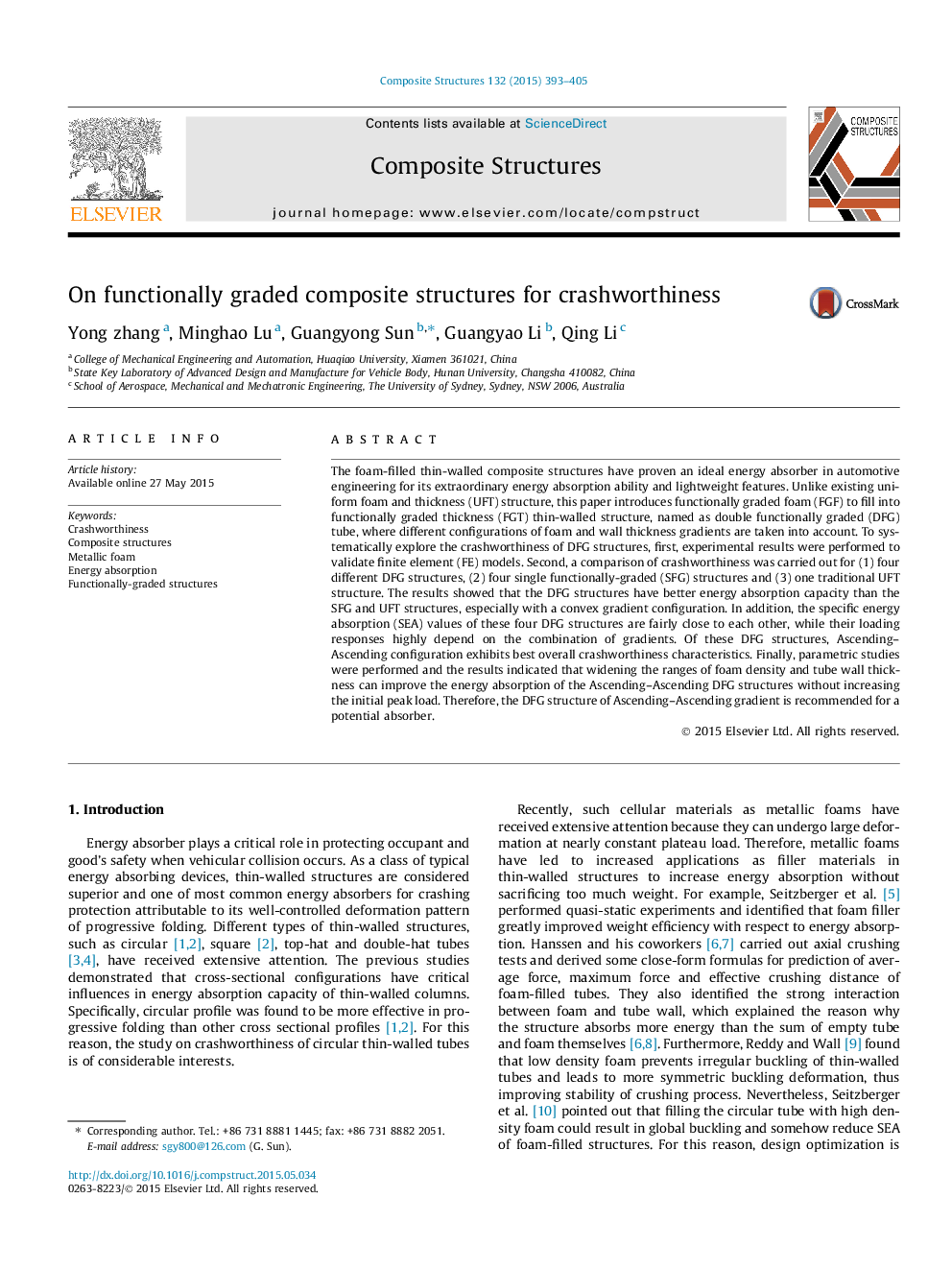| Article ID | Journal | Published Year | Pages | File Type |
|---|---|---|---|---|
| 251095 | Composite Structures | 2015 | 13 Pages |
The foam-filled thin-walled composite structures have proven an ideal energy absorber in automotive engineering for its extraordinary energy absorption ability and lightweight features. Unlike existing uniform foam and thickness (UFT) structure, this paper introduces functionally graded foam (FGF) to fill into functionally graded thickness (FGT) thin-walled structure, named as double functionally graded (DFG) tube, where different configurations of foam and wall thickness gradients are taken into account. To systematically explore the crashworthiness of DFG structures, first, experimental results were performed to validate finite element (FE) models. Second, a comparison of crashworthiness was carried out for (1) four different DFG structures, (2) four single functionally-graded (SFG) structures and (3) one traditional UFT structure. The results showed that the DFG structures have better energy absorption capacity than the SFG and UFT structures, especially with a convex gradient configuration. In addition, the specific energy absorption (SEA) values of these four DFG structures are fairly close to each other, while their loading responses highly depend on the combination of gradients. Of these DFG structures, Ascending–Ascending configuration exhibits best overall crashworthiness characteristics. Finally, parametric studies were performed and the results indicated that widening the ranges of foam density and tube wall thickness can improve the energy absorption of the Ascending–Ascending DFG structures without increasing the initial peak load. Therefore, the DFG structure of Ascending–Ascending gradient is recommended for a potential absorber.
